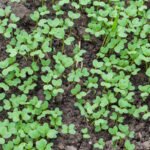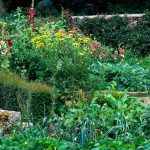Indoor vegetable gardening ideas have become increasingly popular as people are discovering the joy and benefits of growing their own fresh produce right in their own homes. This introductory section will delve into why indoor vegetable gardening is a trending practice and how it can be particularly beneficial for those living in apartments or with limited outdoor space.
In recent years, there has been a significant rise in the popularity of indoor vegetable gardening. People are embracing this practice not only for the satisfaction of growing their own food but also for the numerous advantages it offers.
One of the key reasons for its appeal is that it allows individuals who live in apartments or houses without yards to still experience the joys and benefits of gardening. Indoor gardens offer a way to bring nature indoors, creating a green oasis even in urban environments.
The benefits of indoor vegetable gardening extend beyond just beautifying living spaces. By growing your own vegetables indoors, you have control over the quality and safety of what you consume. You can choose to grow organic produce, free from potentially harmful chemicals and pesticides, ensuring that you are nourishing yourself with the healthiest ingredients possible. Additionally, having an indoor garden means having fresh vegetables readily available year-round, regardless of seasonal limitations.
Indoor vegetable gardening is not just a passing trend; it is a sustainable way to take part in something that brings numerous rewards. Whether you live in an apartment or simply want to make use of underutilized space within your home, cultivating your own indoor garden is both exciting and practical.
In the following sections, we will explore various aspects of indoor vegetable gardening, including choosing the right vegetables, essential tools and materials needed, setting up your space effectively, different techniques to consider, optimal lighting conditions to maintain, proper watering and fertilizing methods, protecting plants from pests and diseases, as well as harvesting and enjoying your homegrown bounty. So let’s dive in and discover how you can create your very own thriving indoor vegetable garden.
Choosing the Right Vegetables for Indoor Gardening
When it comes to indoor vegetable gardening, selecting the right vegetables is essential for a successful and thriving garden. Not all vegetables are suitable for indoor growing conditions, so it’s important to choose varieties that can adapt well to limited space and controlled environments. Here are some factors to consider when selecting vegetables for your indoor garden.
Space Requirements
Some vegetable plants require more space than others to grow and spread their roots. When choosing vegetables for your indoor garden, consider the available space you have. Compact or dwarf varieties that don’t take up too much space, such as cherry tomatoes, lettuce, and herbs like basil or parsley, are ideal for small indoor gardens.
Lighting Needs
Lighting is a crucial factor in indoor gardening because sunlight may not always be sufficient indoors. Some vegetables require more sunlight than others, so it’s important to select vegetables that can thrive with less natural light or invest in artificial lighting systems. Leafy greens like spinach and kale, as well as root crops like carrots and radishes, tend to do well in lower light conditions compared to fruiting crops like peppers or tomatoes.
Growth Habit
Consider the growth habit of each vegetable variety before choosing them for your indoor garden. Some plants have sprawling vines that need support structures or trellises, while others grow compactly and upright. Small trellises or cages can be used for climbing plants like cucumbers or beans if you have vertical space available.
It’s also worth noting that certain vegetables are better suited for specific types of indoor gardening techniques such as hydroponics or aquaponics. For example, leafy greens like lettuce and microgreens thrive in soil-less hydroponic systems where their roots are directly exposed to nutrient-rich water solutions.
By considering these factors, you can choose the right vegetables that will not only thrive in your indoor environment but also provide you with a bountiful harvest. Experiment with different varieties and have fun exploring the possibilities of indoor vegetable gardening.
Essential Tools and Materials for Indoor Vegetable Gardening
Indoor gardening requires some essential tools and materials to ensure successful cultivation of vegetables. Having the right equipment will help create a conducive environment for plants to thrive indoors. This section will discuss the necessary tools and materials needed for indoor vegetable gardening.
One of the most critical components of indoor gardening is choosing the right containers. Containers should have adequate drainage holes to prevent waterlogging and allow excess water to flow out. Consider using pots, trays, or raised beds specifically designed for indoor gardening. These containers should be made from durable, non-toxic materials that won’t leach harmful substances into the soil.
The soil used in indoor gardening plays a crucial role in providing nutrients and supporting plant growth. Opt for high-quality potting mix that is well-draining and formulated for vegetables. This type of soil blend typically contains a balanced mixture of organic matter, perlite, vermiculite, and other beneficial additives.
| Essential Tools | Materials |
|---|---|
| Pots, trays, raised beds | High-quality potting mix |
| Gardening gloves | Compost or organic fertilizer |
| Hand trowel and pruning shears | Watering can or spray bottle |
| Garden stakes or trellises | Saucers or trays for drainage |
Aside from containers and soil, having the right tools is essential for maintaining an indoor vegetable garden. Gardening gloves protect your hands while handling plants and working with soil. A hand trowel and pruning shears are useful for planting, trimming, and harvesting vegetables.
Water is a vital element in gardening, so having a watering can or spray bottle is necessary. This allows you to control the amount of water plants receive without disturbing the soil or causing damage. Additionally, having saucers or trays to catch excess water drainage prevents moisture from damaging your indoor space.
Lastly, consider using garden stakes or trellises to support vining vegetables like tomatoes and cucumbers. These will help maximize vertical space utilization and prevent plants from sprawling on the ground.
Setting Up Your Indoor Garden Space
When it comes to setting up your indoor garden space, there are several important factors to consider in order to create an ideal environment for your plants. With limited space available, it is essential to maximize productivity by utilizing vertical space and organizing the layout effectively.
One important aspect of setting up your indoor garden space is choosing the right containers for your plants. There are a variety of options available, including traditional pots, hanging baskets, and vertical planters. Consider the size and growth habit of each vegetable variety you plan to grow and choose containers that provide enough room for root development. Additionally, ensure that your containers have drainage holes to prevent waterlogging.
Another crucial factor in setting up your indoor garden is providing adequate lighting. Plants need light for photosynthesis, so it is important to supplement natural sunlight with artificial lighting in an indoor setting. There are various options for artificial lighting, including fluorescent lights, LED lights, and high-intensity discharge (HID) lights. Each type of light has its own advantages and considerations, such as energy efficiency and heat output.
In addition to containers and lighting, soil quality plays a key role in the success of your indoor garden. Choose a well-draining potting mix that provides necessary nutrients for plant growth. Avoid using regular garden soil as it may contain pests or diseases that could harm your plants. Consider adding organic matter or compost to improve soil fertility.
By taking into account these key factors – containers, lighting, and soil quality – you can create a well-equipped indoor garden space that maximizes productivity and promotes healthy vegetable growth.
| Factors | Description |
|---|---|
| Containers | Choose containers with enough room for root development; ensure they have drainage holes. |
| Lighting | Supplement natural sunlight with artificial lighting options such as fluorescent lights, LED lights, or HID lights. |
| Soil Quality | Select a well-draining potting mix that provides necessary nutrients for plant growth; consider adding organic matter or compost. |
Indoor Vegetable Gardening Techniques
Indoor vegetable gardening allows individuals to grow their own fresh produce year-round, regardless of limited space or outdoor conditions. There are various techniques that can be employed to create a successful indoor garden, including hydroponics and aquaponics. These innovative methods eliminate the need for soil and allow plants to grow using nutrient-rich water solutions.
Hydroponics
Hydroponics is a soil-less gardening technique that involves growing plants in a water-based, nutrient-rich solution. This method allows plants to directly absorb the nutrients they need, resulting in faster growth and higher yields. In hydroponic systems, plants are typically set in small containers such as net pots or troughs, with their roots suspended in the nutrient solution. This enables easy access to oxygen while preventing over-watering.
One popular type of hydroponic system is the “ebb and flow” or flood and drain system. This method involves periodically flooding the plant’s root zone with the nutrient solution before draining it away. Another common hydroponic technique is the deep water culture (DWC) system, where plants are suspended with their roots immersed in a steady stream of oxygenated nutrient solution.
Aquaponics
Aquaponics combines aquaculture (raising fish) and hydroponics together in a symbiotic system. In an aquaponic setup, fish waste provides nutrients for the growing plants, while the plants act as a natural filter by absorbing these nutrients. The clean water then returns back into the fish tank, creating a self-sustaining environment where both fish and plants thrive.
One advantage of aquaponics is that not only do you get homegrown vegetables but also fresh fish if desired. Popular fish breeds used in aquaponic systems include tilapia, trout, and catfish. The constant supply of nutrients from the fish waste eliminates the need for adding synthetic fertilizers typically used in hydroponics. Aquaponic systems can be set up using various designs, including media-based systems, nutrient film technique (NFT), and deep water culture.
While both hydroponics and aquaponics offer efficient and sustainable ways to grow vegetables indoors, it’s essential to conduct thorough research on these techniques before starting. Each method has its own advantages and requirements in terms of space, costs, and maintenance.
By exploring these indoor gardening techniques, individuals can find the method that best suits their needs and preferences. With the right knowledge and equipment, anyone can enjoy the benefits of growing their own fresh vegetables year-round, even within the confines of their home.
Maintaining Optimal Lighting Conditions for Indoor Vegetables
Proper lighting is essential for the successful growth of indoor vegetables. While natural sunlight is ideal, it may not always be sufficient, especially for apartment dwellers or those with limited access to sunlight. In this section, we will explore the importance of providing adequate light sources for your indoor vegetable garden and provide recommendations for artificial lighting options.
Understanding the Importance of Providing Adequate Light Sources
Indoor vegetables require a minimum of 6-8 hours of light each day to thrive and produce a bountiful harvest. Insufficient light can result in weak, stunted plants that do not produce an abundant crop. Additionally, poor lighting conditions can lead to leggy growth and leaf drop.
Recommendations for Artificial Lighting Options and Their Benefits
When natural sunlight is unavailable or inadequate, artificial lighting becomes crucial for indoor vegetable gardening. There are several types of artificial lighting options available, and choosing the right one depends on the specific needs of your plants.
- Fluorescent Lights: These lights are commonly used by indoor gardeners because they are inexpensive and energy-efficient. Compact fluorescent lights (CFLs) emit a cool light that is suitable for most leafy greens and herbs. T5 fluorescent lights are more powerful and generate bright light suitable for fruiting plants like tomatoes and peppers.
- LED Grow Lights: LED grow lights have gained popularity among indoor gardeners due to their energy efficiency and longer lifespan compared to other types of lights. They emit specific wavelengths of light that can be tailored to meet the needs of different plants throughout their growth stages.
- High-Intensity Discharge (HID) Lights: HID lights include metal halide (MH) bulbs and high-pressure sodium (HPS) bulbs. MH bulbs emit a blue spectrum ideal for vegetative growth, while HPS bulbs provide a reddish-orange spectrum suitable for flowering and fruiting stages. HID lights can be more expensive but are highly effective for larger indoor gardens or plants with higher light requirements.
When using artificial lighting, it is essential to position the lights at an appropriate distance from the plants to prevent burning or overheating. Additionally, maintaining a consistent light schedule of 10-14 hours a day will mimic natural sunlight and promote healthy growth.
By understanding the importance of providing adequate lighting conditions and choosing the right artificial lighting options, you can ensure that your indoor vegetable garden thrives even without access to natural sunlight.
Watering and Fertilizing Indoor Vegetable Plants
Once you have set up your indoor vegetable garden and chosen the right vegetables to grow, it is crucial to establish a proper watering routine for optimal plant growth. Indoor plants have different water needs compared to their outdoor counterparts, so it is important to understand the basics of watering indoor vegetable plants.
Firstly, it is essential to keep in mind that overwatering can be just as damaging as underwatering for indoor vegetable plants. A common mistake made by many indoor gardeners is providing too much water, which can lead to root rot and other issues. The key is to find the right balance and only water when necessary.
To determine when your indoor vegetables need watering, check the moisture level of the soil regularly. Stick your finger about an inch into the soil – if it feels dry at that depth, it’s time to water. It is best to use room temperature water and avoid using cold or chlorinated tap water, as these can shock the plants’ roots.
As for fertilizing indoor vegetable plants, selecting the right types of fertilizers and understanding their application is crucial for promoting healthy growth. Indoor plants tend to have limited access to nutrients compared to outdoor plants growing in soil enriched with organic matter. Therefore, they may require regular feeding with appropriate fertilizers.
When choosing fertilizers for your indoor garden, opt for balanced formulas specifically designed for vegetables or use slow-release organic fertilizers. It is important not to over-fertilize as it can result in nutrient burn and damage your plants. Follow the recommended dosage instructions provided by the manufacturer or start with a weaker concentration and gradually increase if necessary.
Protecting Indoor Vegetables from Pests and Diseases
Indoor vegetable gardens are not immune to pests and diseases, but with the right knowledge and preventive measures, you can protect your plants and ensure a healthy harvest. It’s important to be proactive in keeping your indoor garden pest-free, as even a small infestation can quickly spread and wreak havoc on your plants.
Additionally, diseases can easily spread among plants in close proximity to each other. By following some simple steps and utilizing natural pest control methods, you can keep your indoor vegetables thriving.
Common Pests that Affect Indoor Vegetable Gardens
1. Aphids: These small insects feed on the sap of plant leaves, stunting growth and causing wilting. Look out for clusters of aphids on the undersides of leaves.
2. Fungus Gnats: These tiny flies lay their eggs in moist soil, leading to larvae that feed on plant roots. Overwatering can contribute to fungus gnat infestations.
3. Spider Mites: These tiny arachnids suck cell contents from leaves, causing yellowing and webbing. Spider mites thrive in warm and dry conditions.
4. Whiteflies: These small flying insects suck sap from plant leaves, resulting in yellowing and reduced vigor. Whiteflies also excrete honeydew which attracts ants and can lead to sooty mold.
Natural Pest Control Methods
There are several natural methods you can use to protect your indoor vegetables from pests:
1. Beneficial Insects: Introduce beneficial insects like ladybugs or lacewings into your indoor garden as they prey on common pests like aphids or spider mites.
2. Diatomaceous Earth: Apply food-grade diatomaceous earth around the base of your plants to deter crawling insects. It works by piercing the exoskeleton of pests, causing them to dehydrate and die.
3. Neem Oil: Dilute neem oil with water and spray it on your plants to control a wide range of pests. Neem oil affects the hormonal systems of insects, hindering their ability to molt or lay eggs.
4. Sticky Traps: Hang yellow sticky traps near your plants to catch flying pests such as whiteflies or fungus gnats. The bright color attracts them, and once they land on the trap, they become stuck.
Preventive Measures for Disease Control
Preventing diseases is crucial in maintaining a healthy indoor vegetable garden:
1. Cleanliness: Keep your indoor gardening area clean by regularly removing any plant debris or fallen leaves that could harbor disease-causing pathogens.
2. Air Circulation: Make sure there is good airflow around your plants to reduce the risk of fungal diseases. Use fans if necessary or open windows periodically for ventilation.
3. Sterilization: Clean and sterilize your gardening tools and containers before using them in order to prevent the introduction and spread of diseases.
4. Disease-resistant Varieties: Choose vegetable varieties that are known for their resistance to common diseases prevalent in indoor gardens.
By taking these steps and being vigilant about pest and disease prevention, you can protect your indoor vegetables and ensure a successful harvest. Remember that early detection and timely action are key factors in addressing any issues that may arise in your indoor garden. With proper care, you can enjoy flavorful homegrown produce all year round.
Harvesting and Enjoying Your Indoor Vegetable Garden
Harvesting and enjoying the fruits of your indoor vegetable garden can bring immense satisfaction and a sense of accomplishment. One of the key aspects of successful indoor gardening is knowing when to harvest your vegetables at their peak flavor and nutritional content. Harvesting too early or too late can affect the taste and quality of your produce.
To ensure the best flavor and freshness, it is crucial to closely monitor the growth and development of your plants. Each vegetable variety has its own optimal time for harvesting, which can be influenced by factors such as temperature, light exposure, and watering practices. Researching specific guidelines for each type of vegetable you’re growing will help you determine the ideal harvesting time.
When it comes to harvesting leafy greens such as lettuce or spinach, it is generally recommended to start picking outer leaves while allowing the inner leaves to continue growing. This method allows for a continuous harvest throughout the growing season. Root vegetables like carrots or radishes can be gently pulled out when they have reached their desired size.
Once you have harvested your indoor-grown vegetables, it’s time to enjoy them in a variety of culinary creations. Freshly picked produce often tastes even more vibrant than store-bought alternatives due to its immediate consumption. From salads, stir-fries, soups, smoothies, and beyond, there are countless ways to incorporate your homegrown veggies into delicious meals.
Additionally, indoor gardening presents an opportunity for experimentation with unique flavors and lesser-known varieties that may not be readily available in stores. Consider using fresh herbs from your indoor herb garden to enhance the flavors of your dishes further. The possibilities are endless when it comes to combining different vegetables and herbs in various recipes.
By growing your own vegetables indoors, you not only have access to nutritious and organic produce all year round but also gain a deeper appreciation for where your food comes from. So go ahead and savor the joy of harvesting and enjoying your indoor vegetable garden – from seedling to plate.
Conclusion
In conclusion, indoor vegetable gardening offers a plethora of benefits and possibilities for those who are limited by space or live in apartments. The growing popularity of this practice can be attributed to its ability to provide fresh and organic produce right from the comfort of your own home. By choosing the right vegetables, utilizing essential tools and materials, and creating an ideal gardening environment, anyone can take up indoor vegetable gardening and enjoy its many advantages.
One of the key benefits of indoor vegetable gardening is the ability to choose from a wide variety of vegetables that thrive in indoor conditions. From leafy greens like spinach and lettuce to herbs like basil and parsley, there are plenty of options to suit every gardener’s taste. It is important to consider factors such as available space, lighting conditions, and temperature requirements when selecting vegetables for your indoor garden.
To ensure a successful indoor vegetable garden, it is essential to have the necessary tools and materials at hand. Choosing the right soil and containers specifically designed for indoor gardening is crucial for providing plants with optimal growth conditions.
Additionally, investing in appropriate lighting options will help emulate natural sunlight for your indoor plants. Whether you opt for artificial grow lights or utilize natural light sources near windows, providing adequate light is vital for the health and productivity of your vegetable garden.
Creating an ideal environment for your indoor garden involves utilizing available vertical space effectively. This can be achieved through strategies like using hanging planters or stacking containers vertically. Such methods maximize productivity while conserving space. Additionally, ensuring proper ventilation and temperature control will help create a conducive environment that promotes healthy plant growth.
Frequently Asked Questions
What vegetables can you grow completely indoors?
There are several vegetables that can be grown completely indoors, allowing individuals to have fresh produce regardless of the season or available outdoor space. Leafy greens like spinach, lettuce, and kale are excellent options for indoor gardening as they don’t require much space and can thrive with minimal sunlight.
Herbs such as basil, parsley, and chives also do well in indoor settings and add flavor to various dishes. Additionally, smaller root vegetables like radishes and carrots can be successfully grown indoors, provided they have enough depth in their containers to develop.
What are the best vegetables to start indoors?
When starting vegetables indoors, it’s crucial to choose plants that are well-suited for indoor growing conditions. Some of the best vegetables to start indoors include tomatoes, peppers, and eggplants.
These warm-season crops require a longer growing period before they can be transplanted outside, making them perfect candidates for indoor cultivation. Starting these plants early indoors offers a head start on the growing season, ensuring healthier and more robust yields when they’re eventually moved outdoors.
What vegetables can be grown indoors in winter?
Growing vegetables indoors during winter can be quite challenging due to reduced natural light and lower temperatures. Nevertheless, there are a few winter-hardy vegetables that can thrive in these conditions. Leafy greens continue to be an excellent choice as they tolerate colder temperatures better than other varieties.
Spinach, kale, arugula, and Swiss chard can withstand cool indoor environments without compromising their growth potential significantly. Additionally, herbs like rosemary and thyme perform well in winter indoors and offer fresh flavors to enhance cold-weather dishes.

If you’re looking to get into vegetable gardening, or are just looking for some tips on how to make your current garden better, then you’ve come to the right place! My name is Ethel and I have been gardening for years. In this blog, I’m going to share with you some of my best tips on how to create a successful vegetable garden.





